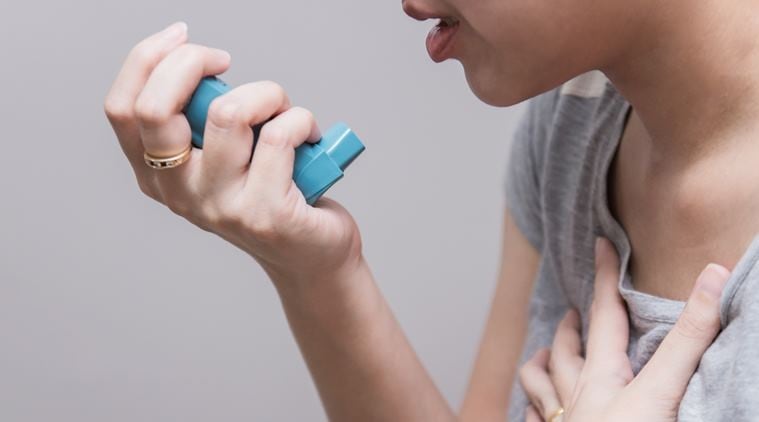 In case of inhalation therapy, corticosteroids reach directly into the organ, in the required amounts only. (Source: File Photo)
In case of inhalation therapy, corticosteroids reach directly into the organ, in the required amounts only. (Source: File Photo)
Winters can be exceptionally difficult for people with respiratory and lung problems, especially for those suffering from asthma. According to the American Lung Association, asthma is one of the most common chronic disorders and currently affecting about 7.1 million children under 18 years. The World Health Organization (WHO)’s Global Burden of Disease Study estimates that 13.8 million disability-adjusted life years (DALYs) are lost yearly due to asthma, representing 1.8 per cent of the total global disease burden. For 300 million people around the globe suffering from asthma, cold winter months often lead to a worsening of their symptoms.
Inhalation therapy and misconceptions about it
Many patients and their family members are misinformed about asthma causes and its treatment options available. Asthma is a hereditary and communicable disease. While it can be prevented by avoiding triggers, inhalers are the last resort. However, there are common myths associated with it. Therefore, there is a necessity to educate the patients and caregivers about the condition, treatment with the minimal side-effect of inhaled corticosteroids or Inhalation Therapy.
“In India, a 20-40 per cent increase in the cases of wheezing, respiratory diseases, exacerbation of bronchial asthma, and bronchitis patients of all ages and gender were likely to report after festive season. Asthma is badly controlled by the patients who may have severe exacerbations on oral medicines as well as a limitation on daily activities. To cope up with this problem, inhalation therapy is the most effective therapy to treat asthma and has fewer side effects and faster action,” says Dr V J S Virdi, consultant paediatrician, Nimbus Hospital, Mohali.
What is inhalation therapy?
Inhalation therapy means to administer drugs directly to the target organ. According to a research article published in Respiratory Medicine, the correlation between inhalation therapy for asthma and clinical efficacy is positive, with improved symptom control and lung function shown in most studies of adults, adolescents and children.
Dr Kranti Garg, associate professor, Chest and TB Hospital, Patiala mentions, “Even a few hours of exposure to pollutants can worsen the lung disease and cause asthma attacks. Therefore, it is important to be prepared for the eventuality. In India, rough estimates indicate the prevalence of asthma between 10-15 per cent among five to 11-year-olds. However, there are thousands of parents who are oblivious to the right treatment options.
In inhalation therapy, the inflammation of the airway requires a very small quantity of corticosteroids around 25 to 100 micrograms, but when it is consumed through the oral/intestinal route, the amount administered is very large which is about 10,000 micrograms since only a fraction of the administered drug reaches the lungs. This means that every time an asthma patient pops a pill or a tablet, he/she is actually taking almost 200 times the amount of medication required, leading to ill-effects on health, explains Dr Garg.
While in case of inhalation therapy, corticosteroids reach directly into the organ, in the specific amount that is necessary to control the symptoms. As compared to oral medication which first gets dissolved in the blood and then reaches the various organs, including lungs, inhalation therapy is a better and simple way for asthma patients to enjoy the winter to the fullest, experts say.